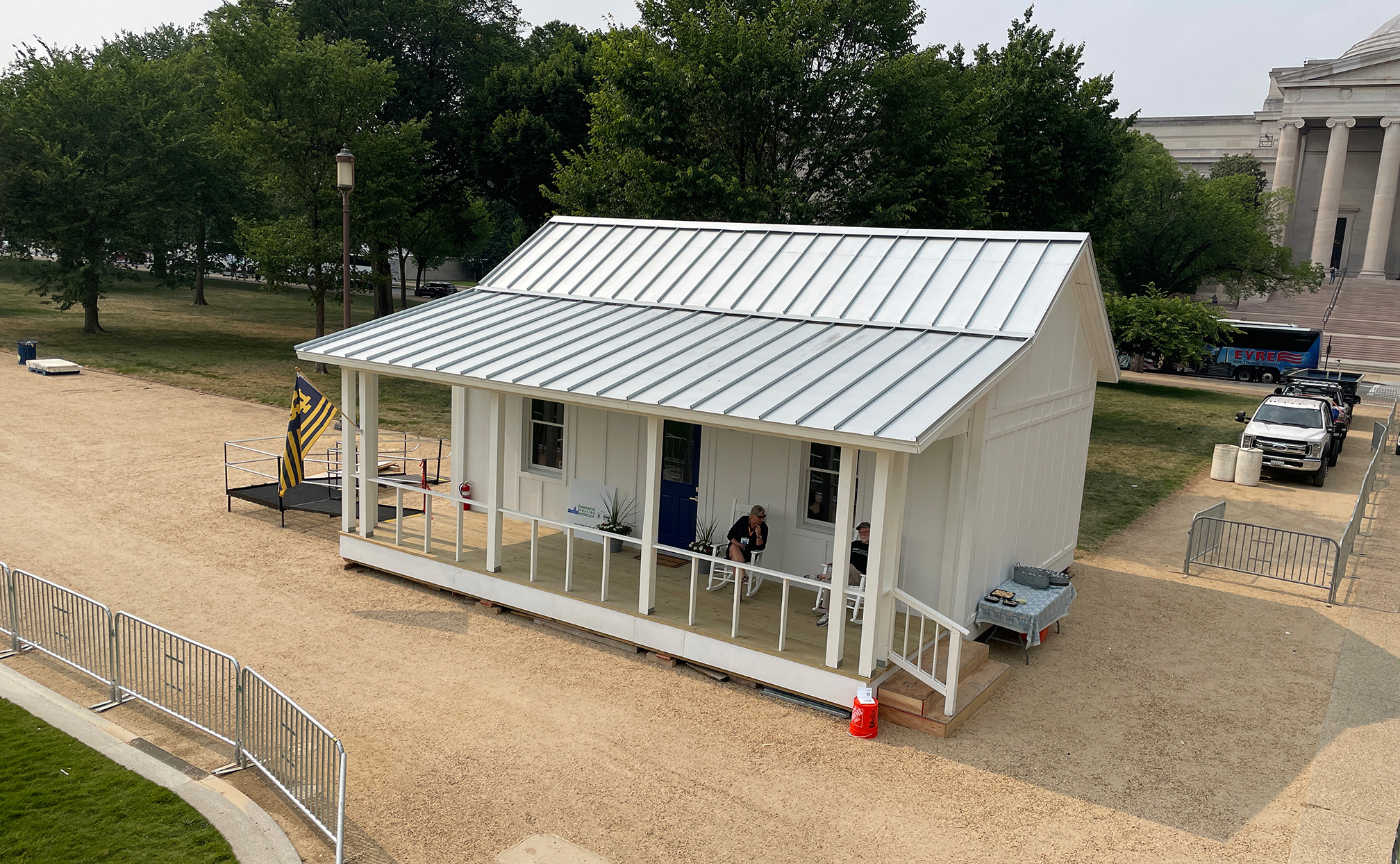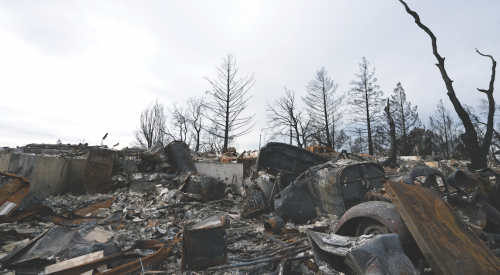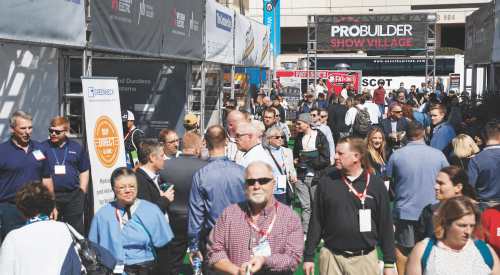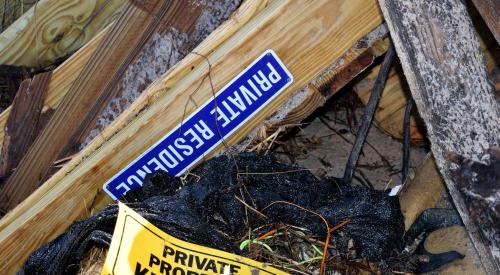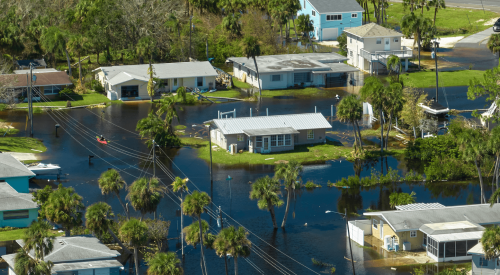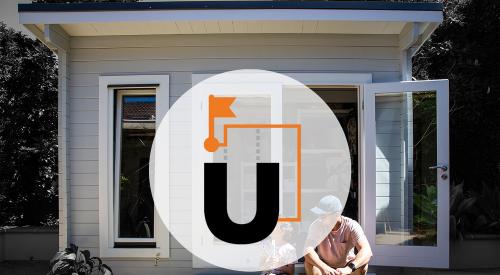Last month, Cypress Community Development Corporation and Marianne Cusato unveiled their concept home at the 2023 Innovative Housing Showcase hosted by the Office of Policy Development and Research, U.S. Department of Housing and Urban Development (HUD), and the National Association of Home Builders (NAHB).
Set on the National Mall from June 9–11, the Showcase was a public event designed to raise awareness of innovative and affordable housing designs and technologies that, in addition to reducing costs and expenses for builders, owners and renters can access affordable, accessible, and healthy housing options for low- and moderate-income households; support aging in place; improve climate mitigation and resilience, and disaster recovery; and/or increase energy efficiency and support decarbonization in the housing sector.
Construction of the Prefab 'White House'
The construction of the accessory dwelling unit (ADU) began in Panama City, Fla., with the fabrication of the steel frame and assembly of floor and roof panels. The home then moved to a staging area in Maryland in advance of the June event.
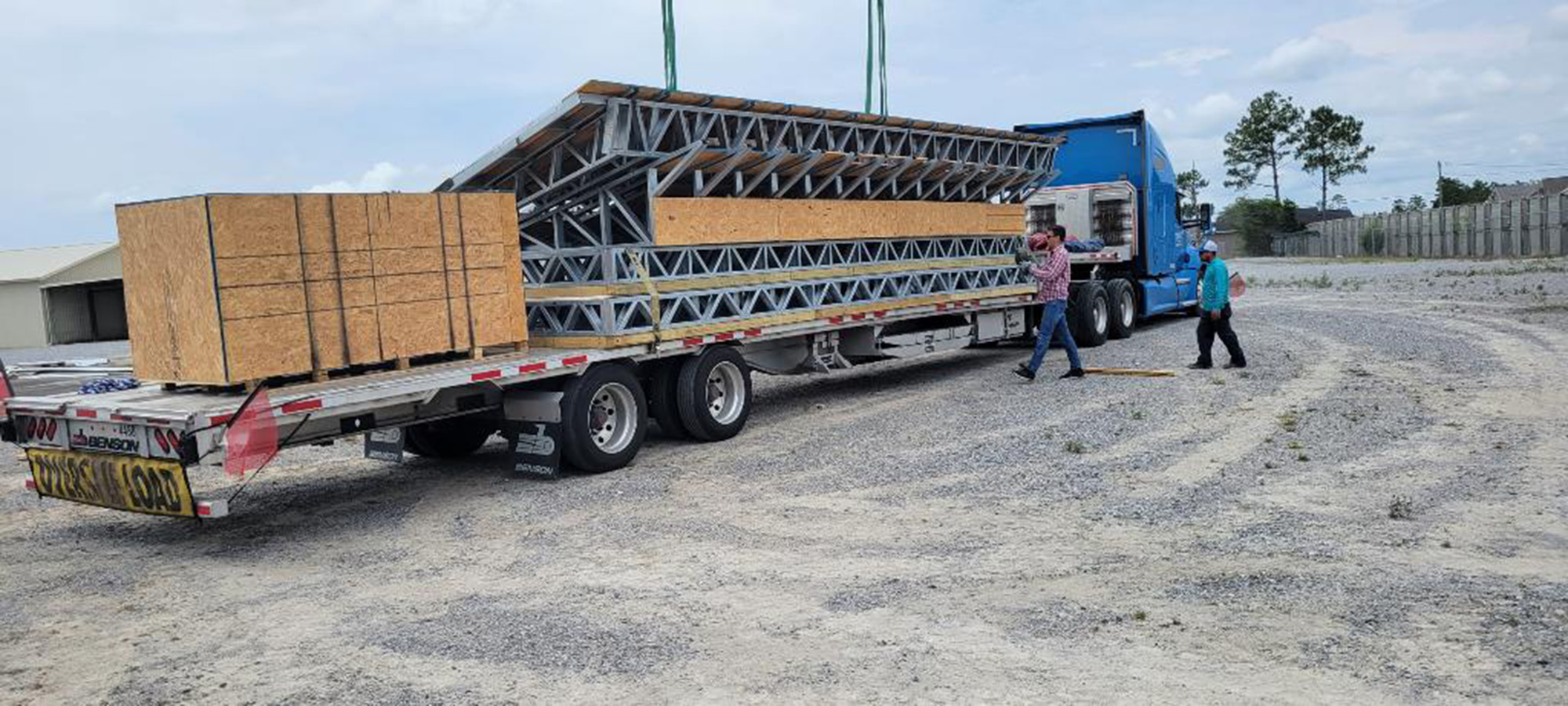
Patrick Cave, founding partner of Cypress Community Development Corporation said, “We are honored to participate in HUD’s 2023 Showcase in support of their mission to create quality, affordable homes for all, and hope this concept home will inspire dialogue that results in policy change similar to how the Katrina Cottage sparked a revision to the Stafford Act.”
The project team broke down what it wanted to address through three key issues:
- Affordable Resiliency by Design: How can we reduce the complexity of the construction process while meeting or exceeding all building science and structural requirements?
- Redefining Prefab Construction: How can prefab construction live up to the promise of being faster, easier, and more affordable than site-built homes?
- Reforming Federal Disaster Housing Policy: How can federal disaster housing policy better meet critical needs while maximizing the reach of funds?
Addressing Prefab Use for Disaster Relief, Workforce Housing
The team at Cypress Development Corporation has been addressing critical housing issues since 2006, when partner, Marianne Cusato’s Katrina Cottage debuted to national media acclaim as a critical solution and alternative to the temporary FEMA trailers for survivors of Hurricane Katrina along the Mississippi Gulf Coast. Congress appropriated $400 million for FEMA’s Alternative Housing Pilot Program (AHPP) to build Katrina Cottages on the gulf coast, resulting in 2,800 homes in Mississippi and 450 homes in Louisiana.
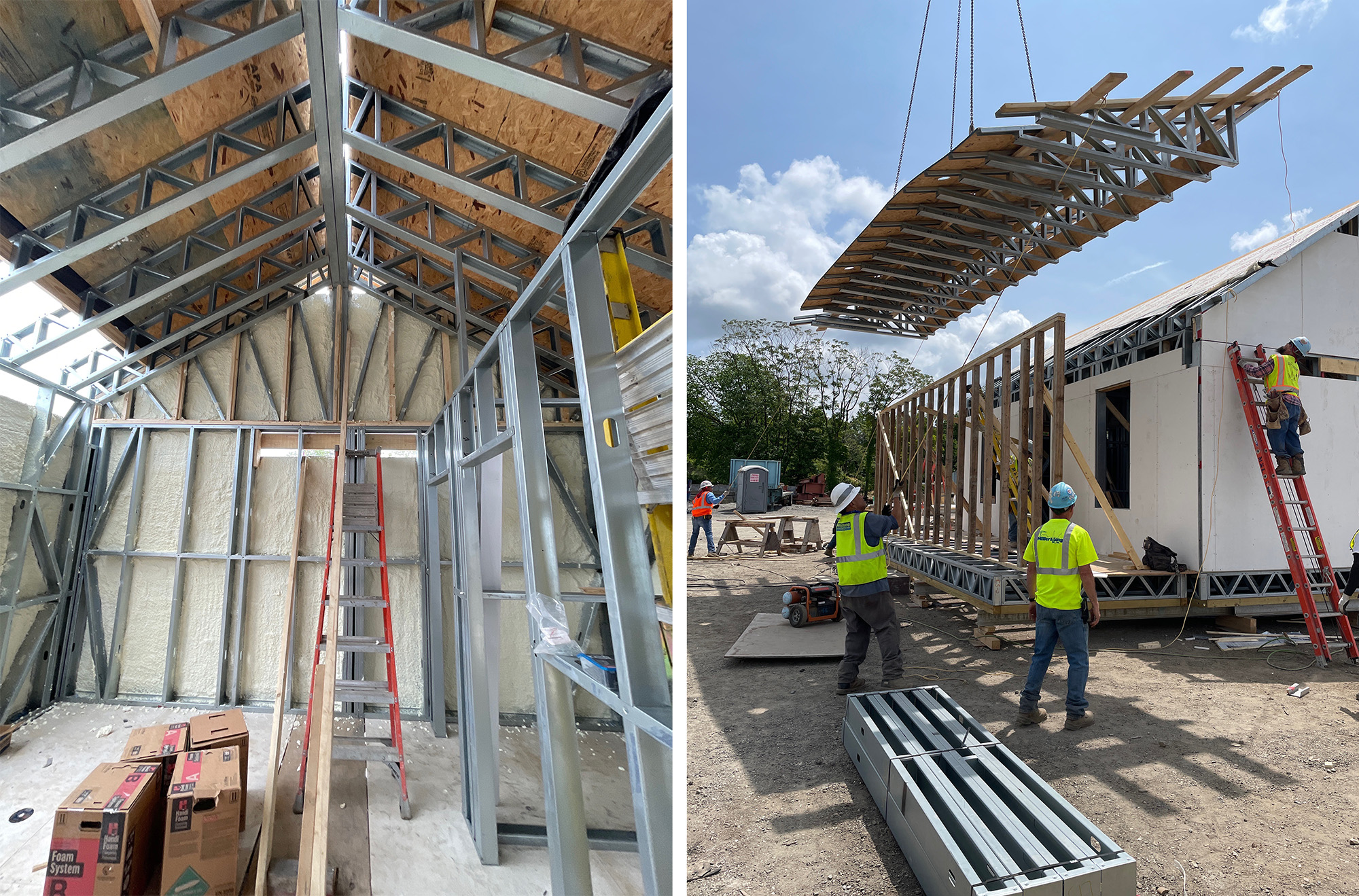
In September of 2006, President Bush signed a revision to the Stafford Act, giving FEMA the ability to build permanent structures modeled on the Katrina Cottage. Due to popular demand, Cusato entered into a licensing agreement with Lowe’s Home Centers to make the cottages available as ADUs in kit form in all Lowe's stores nationwide.
Today's concept home displays several ideas that address the aforementioned three key issues, and poses two policy-related recommendations: Create a stockpile of components for rapid ADU installation—after a natural disaster, for instance—and revise the Stafford Act.
“We were ahead of our time with the Katrina Cottage,” said Craig Savage, partner of Cypress Development Corporation. “Public acceptance of tiny homes and ADUs has allowed us to incorporate technology and innovative materials, paving the way to faster, better, more affordable off-site construction.”
Cusato, designer of the Katrina Cottage and the latest National Mall concept home, expressed joy from the response to the project. “A special thanks to all who have engaged in this critical dialogue about housing affordability. This concept home would not have been possible without a research grant from the University of Notre Dame School of Architecture, generous support from Miller & Long DC, Inc. and the Derbyshire Group, with product donations from Andersen Windows & Doors, BASF, Carlisle, HandiFoam, Hempitecture, Mactac, Mitsubishi Electric, Sashco, SIGA, Valspar, and WindsorOne.”


